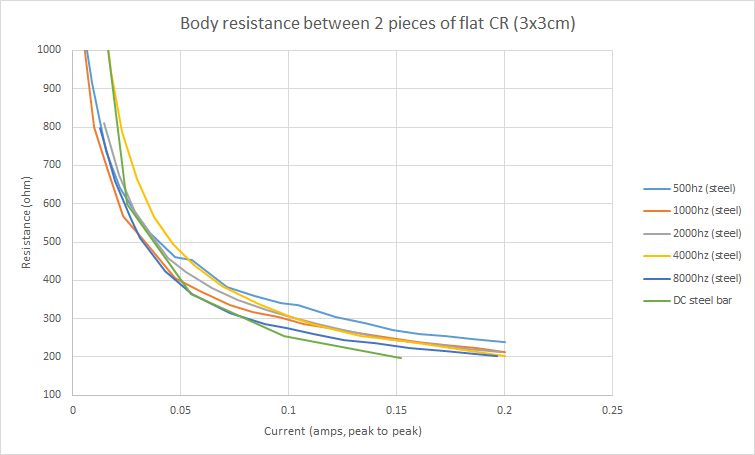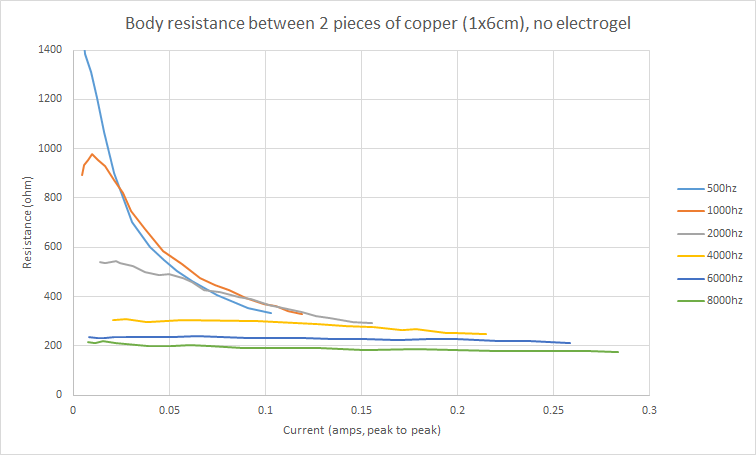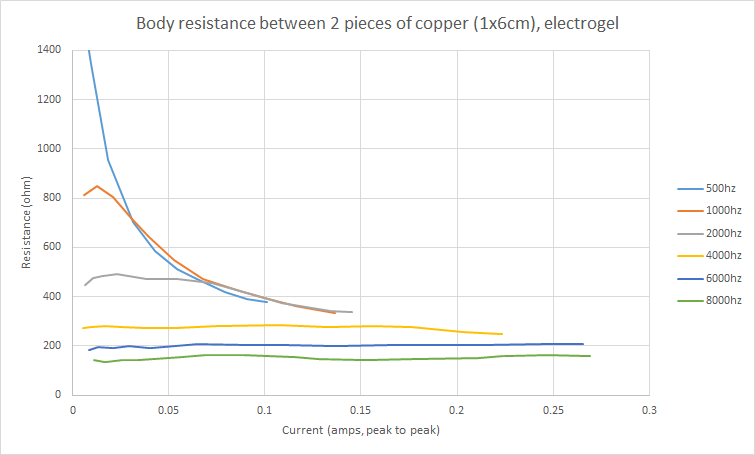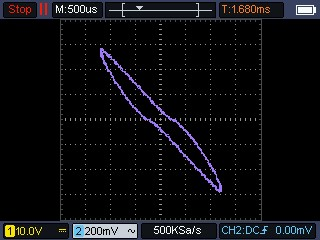skin resistance - diglet48/restim GitHub Wiki
All measurements performed with spectra 360 electrogel.
Conductive rubber on skin (with electrogel)
Measurement setup: pulsed sine wave, 3x3cm conductive rubber on skin.

Conclusion: skin resistance depends on frequency as well as current. When using large conductive rubber pads at normal frequencies total resistance is around 500Ω. This can drop to 200Ω when frequencies are higher.
This includes the resistance of the rubber itself.
Conductive rubber on steel (with electrogel)
I repeated the measurements above, but live meat was replaced with a stainless steel bar.

In this configuration frequency does not play a very big role.
Various metal combinations (with electrogel)
I tested conductive rubber on an aluminium plate with electrogel and DC. This configuration acts as a diode, current only flows one way and there's a minimum voltage before it starts conducting.

Copper on skin (with and without electrogel)


Copper electrodes differ from rubber electrodes. At higher frequencies, the curves are much more flat.
Various scope pictures
with 22ohm current sensing resistor.
rubber on skin, 1000hz

rubber on skin, 1000hz, more gel

Copper on skin, 1000hz

Copper on skin, 4000hz

Conclusions
- The skin acts as a diode, above a certain voltage the dielectric properties of the skin break down and the resistance decreases.
- The properties of the skin depend on the material in contact with the skin as well as the frequency.
- Additional wetting appears to increase capacitance of the skin.